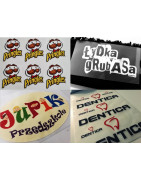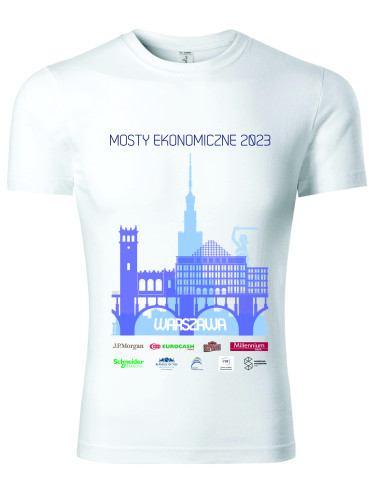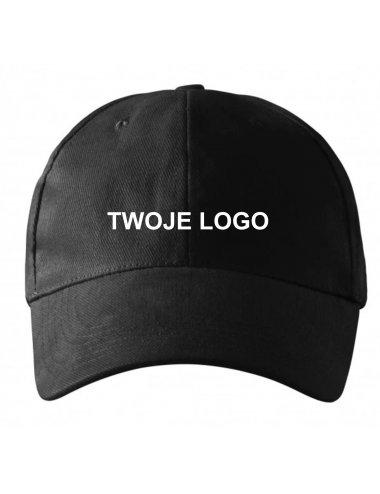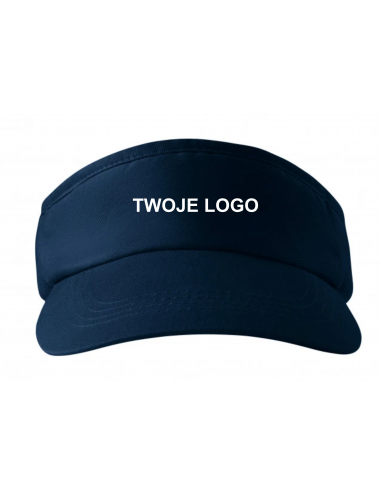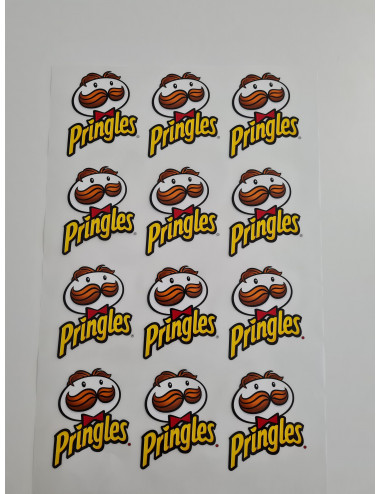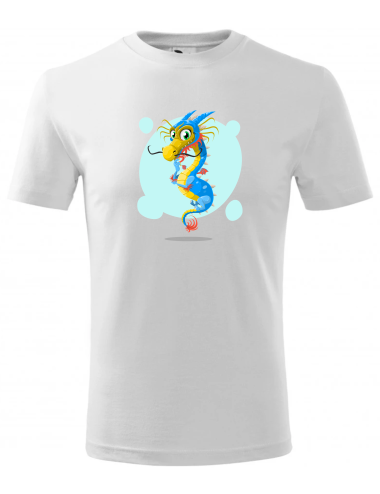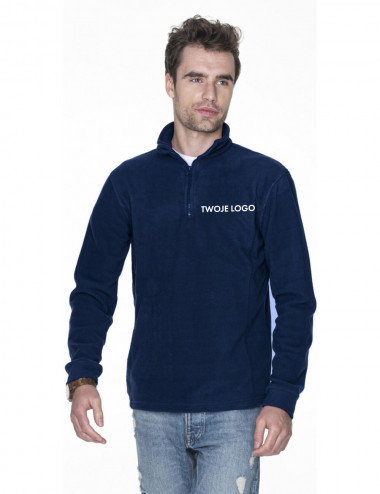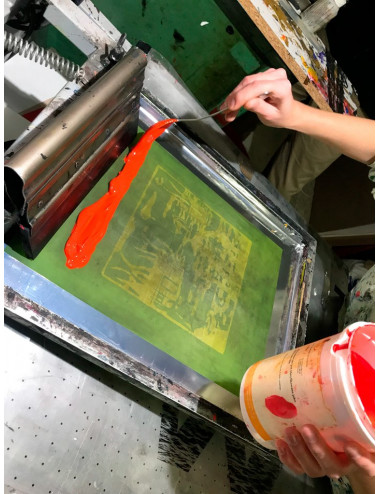Embroidery / Prints
A comprehensive guide to clothing printing: from printing techniques to pattern personalization
Prints on clothing are a popular method of decorating clothes that allows you to express your style, convey information or promote your brand. Nowadays, there are many printing techniques that allow you to create various patterns on clothing. In this article, we will look at various printing techniques, as well as discuss how to create your own prints on clothing and what factors influence the quality of the print.
Introduction to clothing prints
Nowadays, we more and more often come across various types of printed T-shirts , prints on advertising clothing or prints on sweatshirts . In this introduction to clothing printing, we will discuss the different types of clothing that can be printed on, such as T-shirts, promotional clothing, sweatshirts, and describe the printing method and clothing marking methods.
What are clothing prints and why are they important?
Printing on clothing is the process of applying patterns, texts or graphics to clothes using various printing techniques. You can create your own print on a T-shirt , which allows you to express your style, convey information or promote your brand. Prints on clothes are of great importance both for individuals and for companies that want to stand out on the market and build brand recognition.
Various applications of prints on clothing: from advertising to personalization
A personalized print on clothing can have many uses, from advertising purposes to personalizing clothes for yourself or your loved ones. In the case of companies, clothing labeling can help promote the brand, increase recognition and strengthen the company's image. For private individuals, prints on clothing allow you to express your style, interests or beliefs, and can also be an original gift for a loved one.
Various techniques for printing on clothing
The choice of the appropriate printing technique on clothing depends on many factors, such as the type of material, number of colors and order size. Popular printing and marking methods include screen printing , DTG and DTF digital printing, sublimation, latex printing and computer embroidery. In the following sections, we will discuss these techniques and compare their advantages and applications.
Screen printing: when to use it?
Screen printing , or screen printing , is one of the most popular techniques for printing on clothing. It involves transferring the paint through a special sieve onto the material. Screen printing is especially recommended for larger orders and simple designs with a limited number of colors. The advantages of screen printing are high quality and durability of the print, low production costs in large quantities and the ability to print on various materials.
DTG and DTF digital printing: differences and applications
DTG (Direct to Garment) digital printing and DTF (Direct to Film) digital printing are two digital printing techniques on clothing. In the case of DTG digital printing, the pattern is printed directly on the material, which allows for high quality and durability of the print. DTF digital printing involves printing a pattern on a special foil, which is then transferred to the material. DTG digital printing is recommended for small quantities of orders and complex patterns with a lot of colors, while DTF digital printing will work well for clothing with materials that are difficult to print.
Sublimation and latex printing: what are their advantages?
Sublimation is a printing technique that involves transferring a pattern from paper to material using high temperature. Sublimation is especially recommended for clothing made of polyester and for large-format prints. Latex printing is a printing technique that uses latex inks to apply a pattern to a material. Latex printing is recommended for clothing made of natural materials such as cotton or linen. The advantages of sublimation and latex printing are high quality and durability of the print, the ability to print on various materials and ecological inks.
Computer embroidery on clothing: when is it the best choice?
Computer embroidery is a clothing marking technique that involves embroidering a pattern using special machines. Embroidery on clothing and computer embroidery on clothing are especially recommended for advertising, corporate and sports clothing, where high quality and durability of marking are important. Computer embroidery is the best choice when we care about the prestigious and elegant appearance of the print, as well as its durability and abrasion resistance.
Creating your own prints on clothing
Do you want to create your own pattern on clothing, but you don't know how to go about it? In this chapter, we will discuss the benefits of using the clothing creator and show you how to create individual designs on T-shirts and other clothing items step by step.
How to create your own print on a T-shirt?
Creating your own T-shirt print is easier than it seems. Just use the custom pattern creator available on the clothing manufacturer's website. Here's a step-by-step guide on how to create custom t-shirt designs :
- Select the type of T-shirt you want your design on.
- Go to the custom pattern creator and select "Add your own pattern" or "Add text".
- Upload your photo, logo or graphic that you want to put on the T-shirt. Make sure the file has the appropriate resolution and complies with the manufacturer's requirements.
- Place the pattern on the T-shirt by scaling it and moving it to the right place.
- If you want to add text, select the appropriate font, color and size.
- Confirm your design and proceed to order.
It is worth remembering that different tools and techniques for creating individual projects may have different functions and capabilities. Therefore, it is worth reading the wizard's user manual before starting work.
Custom pattern creator: how to use it effectively?
Designing T-shirts using the custom design creator can be not only easy, but also effective. Here are some tips on how to use the wizard effectively:
- Work with high-quality graphics to obtain the best printing effect.
- Use the wizard's functions, such as scaling, rotating or changing colors, to adjust the pattern to your needs.
- Make sure your design meets the manufacturer's requirements regarding size, colors and printing technique.
- Before committing your design, check it for any errors such as typos or misplaced elements.
By using these tips, you will create professional and attractive designs on T-shirts and other clothing.
Individual designs: how to design a T-shirt with a company logo?
Do you want to create clothing with your company logo for your employees or as an advertising element? Here's a guide on how to design a T-shirt with your company logo using the wizard:
- Select the type of T-shirt you want your company logo on.
- Go to the custom design creator and select "Add your own design" or "Add a logo".
- Upload a file with your company logo, making sure it has the appropriate resolution and complies with the manufacturer's requirements.
- Place your logo on your T-shirt by scaling and moving it to the right place.
- If you want to add additional text, such as your company name, select the appropriate font, color and size.
- Confirm your design and proceed to order.
By following these steps, you will create professional and attractive clothing with your company logo , which will be an excellent promotional tool or element of your company's visual identification.
Prints on various types of clothing
Choosing the right type of clothing for printing is crucial to obtaining satisfactory results. In this chapter, we will discuss how to create prints on different types of clothing, such as polo shirts and promotional clothing , and how to choose the best clothing for printing.
Prints on T-shirts: from polo shirts to top quality T-shirts
Creating T-shirt prints may vary depending on the type of T-shirt. Here is a guide on how to create prints on polo shirts and T-shirts of the highest quality :
- Choose the appropriate printing technique, taking into account the type of material, number of colors and requirements for print durability.
- Make sure the graphics are of sufficient quality to ensure high-quality printing on the t-shirts.
- Prepare the T-shirt for printing by cleaning it from any dirt and making sure it is properly stretched on the printing frame.
- Apply paint or ink to the printing plate and then press it onto the T-shirt to obtain an even and durable print.
- In the case of polo shirts , pay attention to the location of the print so as not to disturb the structure of the collar.
- In the case of the highest quality T-shirts , pay attention to the material properties, such as elasticity or air conductivity, which may affect the quality of the print.
By following these steps, you will get professional and durable prints on various types of T-shirts.
Printing on sweatshirts: how to ensure high quality and durability?
Creating prints on sweatshirts requires taking into account several factors to ensure high quality and durability of the print . Here's a guide on how to achieve this:
- Choose the appropriate printing technique, taking into account the type of material, number of colors and requirements for print durability.
- Make sure the graphics are of appropriate quality to ensure high-quality printing on the sweatshirts.
- Prepare the sweatshirt for printing by cleaning it from any dirt and making sure it is properly stretched on the printing frame.
- Apply paint or ink to the printing matrix and then press it to the sweatshirt to obtain an even and durable print.
- Pay attention to material properties, such as thickness or structure, which may affect the quality of the print.
- In the case of hoodies, pay attention to the location of the print so as not to interfere with the functionality of the hood.
By following these steps, you will get professional and durable prints on sweatshirts .
Embroidery and prints on advertising clothing: how to choose the best clothing?
Choosing the right clothing for embroidery and printing is crucial to obtaining satisfactory results. Here is a guide on how to choose the best clothing for embroidery and printing, taking into account the good quality of the clothing and cooperation with a promotional clothing wholesaler :
- Choose clothing made of high-quality materials that will ensure durability of the print and comfort of wearing.
- Make sure that the clothing is appropriately matched to the printing or embroidery technique, taking into account the type of material, number of colors and durability requirements.
- Pay attention to material properties such as air conductivity, elasticity and abrasion resistance, which may affect the quality of the print.
- Cooperate with the advertising clothing wholesaler J, which offers a wide selection of clothing and professional printing and embroidery services.
- Make sure that the promotional clothing wholesaler applies appropriate quality standards and ensures customer satisfaction.
By following these steps, you will choose the best clothing for embroidery and printing, which will be an excellent promotional tool or element of your company's visual identification.
Key factors affecting print quality
The high quality of printing on clothing depends on several key factors, such as the colors of the print , the printing technique and the number of colors of the print . In this chapter, we will discuss how these elements affect the quality of prints made and how to ensure great quality printing on clothing.
Number of print colors: how does it affect the final effect?
Creating professional prints on clothing often involves the use of many colors. Multicolored prints may be more visually attractive, but the number of colors also affects the printing process and the final effect. Here are some tips on how to create professional, multi-color prints:
- Choose the appropriate printing technique that will allow you to obtain precise and durable prints in many colors.
- Make sure the graphics are of sufficient quality and resolution to ensure clear and sharp print colors.
- Pay attention to properly selected colors that will harmonize well with each other and with the color of the clothing.
- For printing techniques that require the use of matrices for each color (e.g. screen printing), ensure that the matrices are precisely prepared and registered to achieve perfect color matching.
By following these tips, you will achieve professional, high-quality, multi-color prints.
High print quality: what techniques provide the best results?
Choosing the right printing technique is crucial to obtaining a high-quality print on clothing. Here are some printing techniques that provide the best results:
- Screen printing - perfect for large quantities and simple graphics, provides durable and clear prints.
- DTG digital printing - ideal for small quantities and complex graphics, allows you to obtain photorealistic prints.
- Sublimation - the best for polyester clothing, allows you to obtain durable and imperceptible prints.
- Computer embroidery - perfect for business and advertising clothing, provides an elegant and durable effect.
By choosing the right printing technique, you increase the chances of obtaining high-quality prints on clothing.
Print durability: what methods guarantee durability?
The durability of the print on clothing is an important factor influencing customer satisfaction and the long-term use of clothing. Here are some methods that guarantee the durability of the print :
- Screen printing - the paints used in this technique are durable and resistant to abrasion and washing.
- Sublimation - a print that penetrates the structure of the material, which makes it imperceptible and does not rub off.
- Computer embroidery - the threads used for embroidery are resistant to abrasion and fading, which ensures durability.
- Flex foil - flexible and durable foil that adheres well to the material and is resistant to washing and abrasion.
By using these methods, you will ensure the durability of the print on clothing, which will contribute to customer satisfaction and the long-term use of printed clothing.
Computer embroidery
Advantages and disadvantages of DTF printing
Advantages and disadvantages of DTG printing
Advantages and disadvantages of computer embroidery
Prints on advertising clothing
P&M Computer Embroidery, Prints is a distributor of leading manufacturers in the world, and its permanent offer includes products from the following companies:
the best advertising clothing
Malfini - unique advertising and everyday clothing
Promostars – Your Advertising Clothing Brand P&M Wholesaler
JHK - T-shirts, sweatshirts, T-shirts - what brand is this?
Professional prints on clothing are what we know best
P &M Rawa Mazowiecka has its own modern machinery and qualified staff, provides computer embroidery and printing services at the highest level, and has its own sewing room for special tasks for demanding customers.
You have your own clothing and need a company logo or other decoration
The P&M company from Rawa Mazowiecka specializes in making permanent prints and embroidery on the customer's own clothing. , clothing marking recommended by the company is:
printing technique
digital direct dtg printing
digital dtf printing
computer embroidery
we offer
your own print on a T-shirt
great print quality
designing t-shirts with print
We guarantee as a P&M company
price of printing high quality of printing durability of printing
Summary
In this article, we discussed various aspects related to prints on clothing , from printing techniques, through creating your own patterns, to key factors affecting the quality of the print. We also presented the applications of prints on clothing and compared various printing techniques, such as screen printing, DTG digital printing, sublimation and computer embroidery .
We emphasized that choosing the right printing technique is crucial to obtaining high-quality prints as well as the durability of the designs. We also presented tips on creating your own T-shirt prints and using pattern creators.
In the article, we also touched on the topic of prints on various types of clothing, such as T-shirts, sweatshirts or promotional clothing, and discussed key factors affecting the quality of the print, such as the number of colors, printing technique and durability of the print.
We hope that this comprehensive guide to clothing prints has provided readers with valuable information and will help them make informed decisions regarding the selection of printing techniques, creating their own patterns and ensuring the quality and durability of clothing prints.





